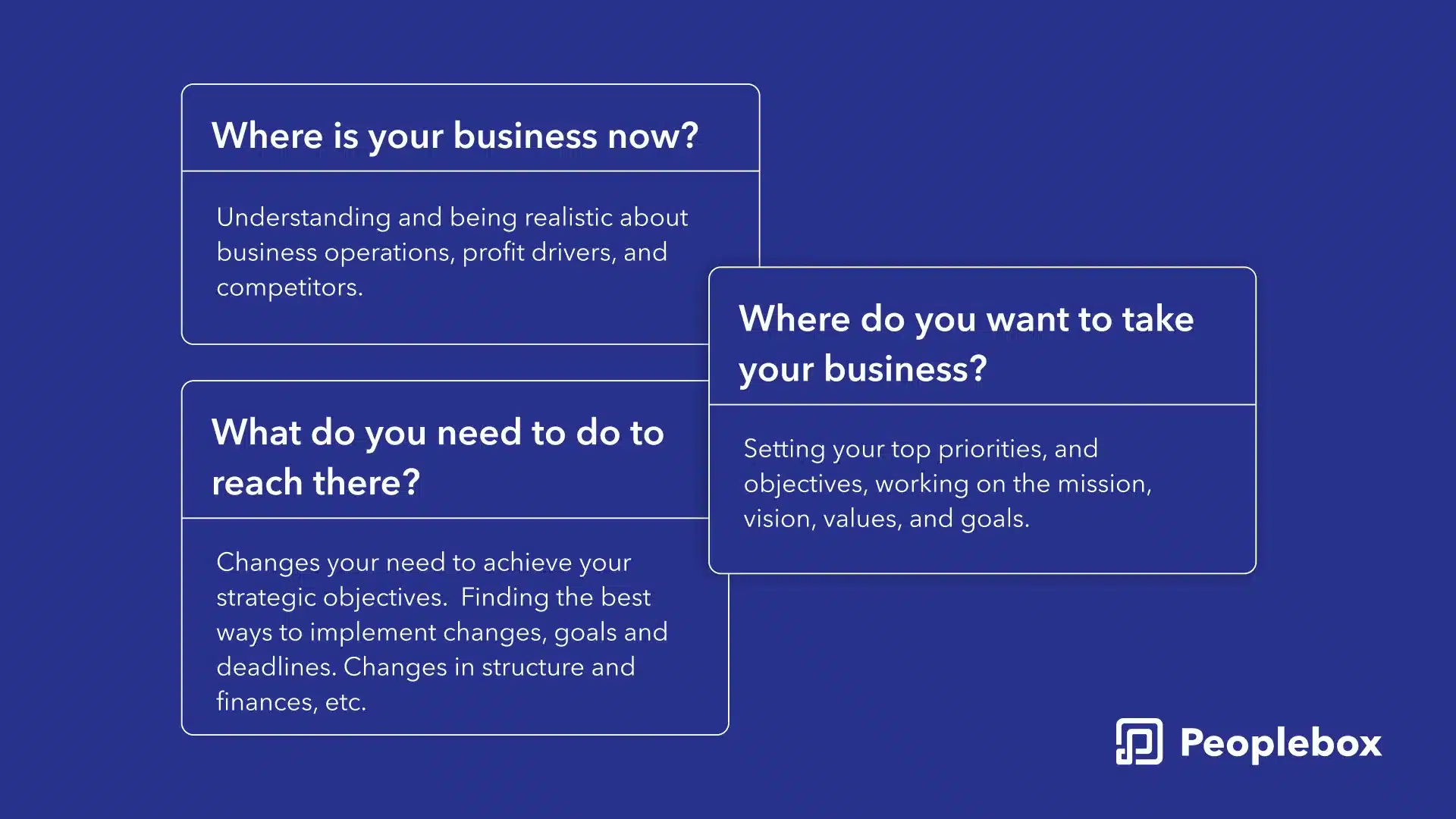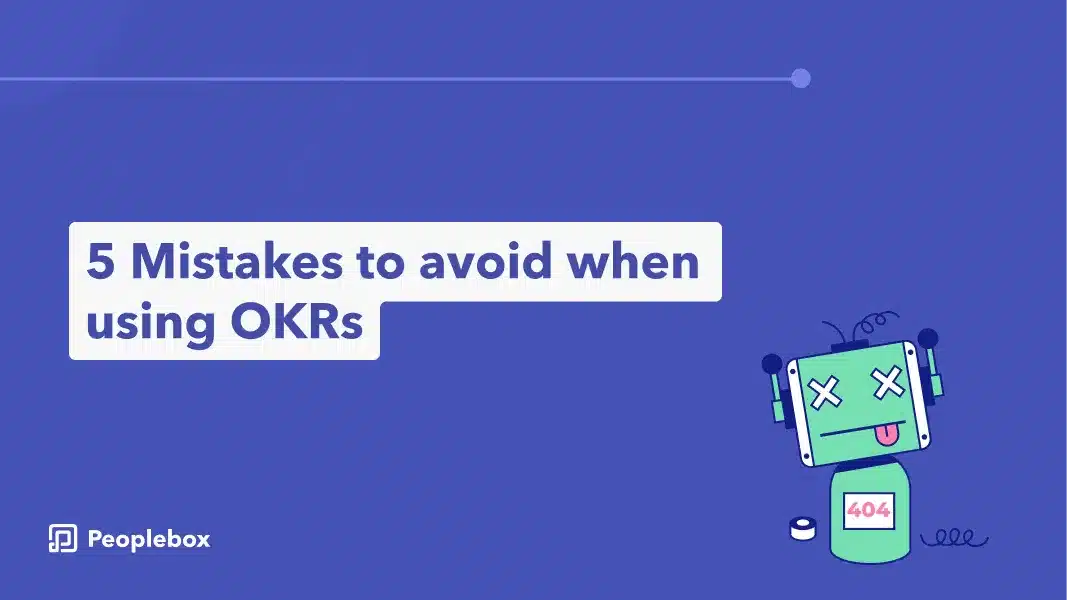Growing a business means embracing the challenges and risks that come with growth. This also encapsulates spending time identifying where you want to take your business and how you will get there. Commonly known as strategic planning.
Strategic planning is important because it:
- Allows everyone to understand where the company is heading and how to support its success
- Help prioritize and allocate resources to the areas that will have the greatest impact on achieving the company’s goals.
- Help avoid being sidetracked by distractions and unproductive activities.
- Most importantly, it helps measure the progress toward goals and set accountability for results.
Strategic planning is an ongoing process and not a one-time meeting happening once in a while. Despite being so crucial for business, leaders in 49% of organizations, spend just one day evaluating their strategic planning. And obviously, they fail to meet their targets.
Among the organizations that take their strategic planning seriously, 61% fail to bridge the gap between strategic planning and its implementation.
So how do you ensure that strategic planning is not just a one-time plan on paper? How to ensure that it is an efficiently functioning process driving your company towards success? It’s simple; introduce OKR into strategic planning.
And how do you ensure that OKRs in strategic planning work well?
The answer is this blog.
How OKRs Help in Strategic Planning
Strategic planning works on these three fundamental elements

OKRs function on similar principles. The objectives define where you want to go; and key results define how you will know you reached there. While OKRs do this for a short cycle of a quarter usually, strategic planning is for longer terms.
OKRs can be a powerful tool for organizations looking to improve their strategic planning and achieve their goals. By providing a clear and measurable approach to goal-setting, OKRs help you align your efforts and resources. They help you stay focused, and continually improve your performance.
What happens in the lack of OKRs?
The lack of OKRs in strategic planning leads to a fragmented and ineffective approach to goal-setting. It causes a lack of focus, poor resource allocation, and low accountability. OKRs provide a framework for goal-setting that helps organizations to align their efforts. It helps allocate resources effectively, and stay focused on what is most important.
OKR implementation usually comes with challenges and takes a few times to practice and perfect. However, there are some common mistakes that you can take care of to ensure that the chances of failure are less.
Common Mistakes to Avoid When Using OKR for Strategic Planning
1. Too many OKRs
It is crucial to strike a balance between having enough OKRs to drive progress and not having too many OKRs. Otherwise, it becomes overwhelming and difficult to effectively execute.
A smaller number of well-defined, prioritized OKRs that align with your strategy leads to better focus and success.
The ideal number is 3 Objectives with 3-5 key results each. This should guide you for setting the perfect number of OKRs for your organization.
The solution to avoid having too many OKRs in strategic planning:
- Prioritize: Determine which objectives are most important to the success of your organization and focus on those. It will help you stay focused on the most critical goals.
- Align with overall strategy: Make sure your OKRs align with the overall strategy of your organization. It will ensure that they are directly contributing to your organization’s success.
- Involve key stakeholders: Involve key stakeholders in the process of developing OKRs. This will help ensure that all objectives align with the needs and priorities of different departments and teams.
- Set achievable and measurable objectives: Make sure your OKRs are achievable and measurable. This makes tracking progress and success easy.
- Review regularly: Ensure regularly review your OKRs to assess progress and make adjustments as needed. This will ensure that resources are effectively used and that the focus remains on the most objectives.
2. Too ambitious or too easy; vague and open-ended OKRS
Your OKRs should be challenging enough to drive progress and should not be so ambitious that they are unattainable.
It is also important to set objectives that are achievable but still provide a challenge to the organization. OKRs that are too ambitious can lead to disappointment and demotivation. On the other hand, setting OKRs that are too easy can lead to complacency.
Another point to keep in mind is to avoid setting OKRs that are vague and open-ended.
For example:
Objective: Improve Customer Satisfaction
Key Result: Make customers happier
This OKR is vague and open-ended, which makes it difficult to measure progress and determine success. It has no specific target or plans for how customer satisfaction will improve. This makes it difficult to determine its success.
The right OKR here would look something like this:
Objective: Improve Customer Satisfaction
Key Result: Increase customer satisfaction rating from 75% to 85% in the next quarter by implementing a new customer support system.
This is specific and measurable and it is easier to track progress and determine success.
The solution to avoid having too ambitious or too easy OKRs
- Consider past performance and set objectives that build on past successes.
- Set incremental goals that build towards the overall objectives. This will ensure that the company makes progress and that the organization stays motivated.
- Regularly review your OKRs and make adjustments as needed.
- Involve team members and take their inputs into account.
- Balance short and long-term objectives for a mix of achievable and challenging objectives.
3. Mistaking everyday tasks for OKRs
Mistaking everyday tasks for OKRs is another common mistake in strategic planning. OKR is a specific, measurable, and time-bound objective that drives progress towards a larger goal.
Everyday tasks, on the other hand, are the routine tasks that should be completed to keep an organization running smoothly.
When you mistake everyday tasks for OKRs, it leads to a lack of focus and direction. Instead of driving progress towards goals, the organization becomes bogged down in routine tasks. It fails to make significant progress towards the goals. This leads to demotivation among team members. Their efforts go towards completing tasks rather than achieving outcomes.
For example, a team sets an OKR to “Answer all customer emails.”
While answering customer emails is an important task, it’s not a specific, measurable, and time-bound objective. It does not drive progress towards a larger goal. It is simply a routine task that needs to be completed.
A better OKR for this team would be to “Increase customer satisfaction by 10% through improved response times and quality of email support.”
This OKR is specific, measurable, and time-bound. It drives progress towards a larger goal of improving customer satisfaction.
To avoid this mistake, it is important to clearly define what the OKR is and ensure it is focused on outcomes and results. Make sure your OKRs are aligned with the organization’s goal and prioritize them accordingly. Regularly review your OKRs to ensure they are still relevant and aligned with your priorities.
4. Not using a tool to streamline OKR implementation
Not using a tool to streamline OKR implementation can be a mistake, as it can make setting and tracking OKRs a difficult and less effective process.
Here are some of the benefits of using a tool to streamline OKR implementation:
- Focus and Collaboration: A tool can make it easier for team members to collaborate and work together on setting and achieving OKRs. It will ensure that everyone is working towards the same goals.
- Alignment: A tool will help ensure that OKRs align with your priorities and that everyone works towards the same.
- Visibility: A tool can provide visibility into the progress of OKRs across the organization. This makes it easy to see how different teams and departments contribute to the larger goals.
- Tracking: A tool will help you track progress towards OKRs and provide real-time insights into performance. This allows you to set individual, team & company KPIs & track them in weekly, monthly, quarterly or yearly views.
5. Creating OKRs in silos
When OKRs are created in silos, teams or departments work on their own objectives without considering the larger goals. This can lead to a lack of alignment and coordination, which can undermine the effectiveness of the OKRs.
For example, the marketing department sets an OKR to “Increase website traffic by 20%,” while the sales department set OKR to “Increase sales by 15%.” While these are both important goals, they don’t align with each other or the company. Both teams will work without considering how their actions may impact each other. Which will undermine the effectiveness of the OKRs and lead to missed opportunities.
To avoid this, involve key stakeholders from across the organization when setting OKRs and ensure that all the OKRs align. Regularly review and adjust OKRs, to ensure they are still relevant and aligned.
Why Your OKRs May Be Failing And How To Fix It?
Final Words
As your business grows, it becomes complex and demands more sophisticated planning. To do so, you need to collect and analyze a wide range of data about your business. Learn about the day-to-day operations, the current market conditions and potential markets.
Avoiding these common mistakes will ensure that your OKRs bring the desired outcomes.
You must keep OKRs specific, measurable, and time-bound. You must involve key stakeholders and foster cross-functional collaboration. Regularly review and adjust OKRs, and use a tool like Peoplebox to streamline OKR implementation.








